Are you looking for an agritourism or a bed and breakfat in Tuscany, near Florence? Fill out the form below and we will help you get in contact with the best facilities in the Tucany region in the area of Florence. You will get an email with a online estimation within 24 hours!!!
« The city of Florence is very well populated, generative, good air, the people are welldressed, the women beautiful and nicely adorned, the buildings marvelous and full of art, more than the other cities. For theese reasons poeple come from afar to visit her, not because they have to but for the pleasure of the goodness and the art and all the beauty that decorates our city. »
(Dino Compagni, Cronica delle cose occorrenti ne' tempi suoi, Book I 1, 1312 aprox.)
Florence is universally recognized as a city of Art, with a priceless heritage of architecture, paintings, sculptures, and collections of historical and scientific works, which all together creates the city, like a huge living museum with many bed and breakfast and agritourisms, so typical of Tuscany.
Near the heart of Florence you can find agritourisms and bed and breakfast and than start with visiting the Piazza della Signoria, with the majestic Palazzo Vecchio, with a gallery of sculptural masterpieces in the Loggia dei Lanzi and the near Galleria degli Uffizi, one of the most famous artmuseums in the world. Not far away from our bed and breakfast is the religious center of the cathedral of Santa Maria del Fiore, with the majestic cathedral, with the beautiful cupol, it was said that with it´s shadow reached to cover all of Tuscany, the enormous cathedral is beautifully accompanied by the Bell Tower, one of the most beautiful in Italy, and the Baptistery of San Giovanni, with its famous bronze doors amongst these is the golden gate of heaven.
Staying in bed and breakfast in Tuscany near Florence, you can explore the Arno river, which passes through the city and occupies a place in the history of Florence at par with the people who live there. Historically, the local population has both loved and hated this river, which led to lots of tradebenefits but also to flood disasters. Among the bridges that crosses the river the bridge Ponte Vecchio is unique in the world, with the typical jewlery-shops in the little houses built on it, it is the only bridge in the city that survived the Second World War.
Staying in one of the agritourisms or bed and breakfast in Tuscany near Florence you will have the opportunity to visit the most beautiful museums in the world like the Uffizi. Florence has also other museums like: the Galleria dell'Accademia, the Bargello Palace or Palazzo Pitti. The Florentines boast of possessing the two best and most beautiful works of art the female (the Venus of Botticelli) and the male (the David of Michelangelo).
Most bed and Breakfast and agritourisms in Tuscany near Florence have a Renaissance-style like the city of Florence it self with works as the works of Filippo Brunelleschi (the Spedale degli Innocenti, the church of San Lorenzo and Santo Spirito) and Leon Battista Alberti (the facade of Santa Maria Novella and the Palazzo Rucellai).
But the Bed and Breakfast and agritourisms can also represent other periods of art, from Romanesque to San Miniato al Monte, the Gothic Santa Croce (with the tombs of the Italian most famous persons, such as described by Ugo Foscolo, now buried there himself ), the extravagance of Giambologna Mannerism or Bernardo Buontalenti (like the Neptune-fountain or the Garden of Boboli), up to the masterpieces of the great Italian architects of the twentieth century as the trainstation of Santa Maria Novella and the Stadio Artemio Franchi, works of John Michelucci and Pier Luigi Nervi.
Staying in the Agritourisms and bed breakfast of Tuscany near Florence you can visit:
Arco di Trionfo:
Locaded in the Piazza della Libertà and was raisen in the eighteenth century by Jean-Nicolas Jadot. He worked also with the architect Schamant and for the decoration of the arch they chose personally the artists from the Florentine Art Academy, who created the statues of mythological gods.
Squares in Florence:
- Piazza della Signoria is the central square of Florence, home of the civil power with Palazzo Vecchio and the heart of social life in the city. It is the only place in the world to host an extraordinary series of masterpieces of sculpture laden with political messages that should inspire the governors of the city.
- Piazza del Duomo is one of the most famous monuments of Italy, with the cathedral, Giotto's Belltower and the Baptistery of San Giovanni.
- Piazza della Repubblica
is a 1800-like square with the shape of a large rectangular, with about 75 m to 100 m, is the "living room" of the city, with great coffeehouses and some luxury hotels, today the square is reservatedis for pedestrian use and is at the heart of the citys tourist area.
- Piazza Santa Croce, with the Santa Croce church, being very large and regular in shape, in the Renaissance it became the ideal place for knightly jousts, festivals, performances and competitions as well as traditional popular games as football in costume, which is still held there every June.
- Piazza San Lorenzo with the church of San Lorenzo, while silhouetted against the background the great dome of the Chapel of the Princes. This square is famous for the lively market that is held there every day.
- Piazza Santa Maria Novella, dominated by the magnificent facade of the church of Santa Maria Novella, it is one of the main squares of Florence.
- Piazza della Santissima Annunziata is one of the most stylistically beautiful and harmonious of all, not only of the city, but of all Italy, perhaps the first example of European town planning.
- Piazza Santo Spirito is one of the most typical and lively squares in the district of Oltrarno. Often fairs and markets are held here, it is also full of restaurants and nightclubs, which makes it one of favorite meeting places and holdouts in Florence.
- Il Piazzale Michelangelo is the most famous viewpoint of Florence, reproduced in countless postcards and mandatory tourists visit the city.
Buildnings in Flornece:
- Palazzo Vecchio is located in Piazza della Signoria in Florence and is the seat of the municipality of the city. Inside, the political fate of the city was decided, from the Republic until Duchy of Cosimo I de 'Medici, who turned it into private palace. The Museum of Palazzo Vecchio expose, among others also the works of Agnolo Bronzino, Michelangelo Buonarroti and Giorgio Vasari.
- Palazzo Medici Riccardi is located in Florence, in what for its amplitude was called Via Larga (the large street), Via Cavour of today. It was the headquarters of the Medici family until the middle of the sixteenth century. A masterpiece of Renaissance civil architecture , keeps the jewel of the chapel of the Magi by Benozzo Gozzoli, full of portraits of the Medici and the people of their time.
- Palazzo Pitti was the palace of Florence from the second half of the sixteenth century and to the Savoy during the period of capital Florence (1865-1871). During the centuries it has been continuously enhanced and expanded to become one of the most important artistic sites in the city.
- In Florence, in Via della Vigna Nuova 18, we find Palazzo Rucellai, a masterpiece with its fifteenth century Florentine. It was designed by Leon Battista Alberti, who put into practice the theoretical dictates of his De re aedificatoria. The Strozzi Palace is located about halfway through the Via Tornabuoni. It is considered one of the finest examples of civil architecture made during Florentine Renaissance.
- Palazzo Davanzati, Located in Via Porta Rossa, is a rare example of a fourteenth century house restored in the beginning of the 19 centuri by the antiquarian Elia Volpi. Today it is a public museum. Among the most valuable parts we have the courtyard, where you used to dock the horses, and the frescoed room with courteous scenes.
- Palazzo Antinori It is located in the square piazza Antinori at one end of the street Via de 'Tornabuoni. It was built between 1461 and 1469 possibly by Giuliano da Maiano (given the similarities with the Sienese Palazzo Spannocchia) by Giovanni di Bono Boni, on some houses already owned by the Bordoni. The incomplete building was put up for sale by Boni for financial problems in 1475 and passed on to the Martelli family and, from 1506 to Niccolò Antinori.
-
The churches of Florens:
- Santa Maria del Fiore is the Cathedral of Florence, the church is the fourth largest in Europe, after San Pietro in Vatican, Saint Paul in London and the Duomo in Milan, it is 153 meters long and the base of the famous chathedral, which is visible from the whole plain of Florence and all the way to Prato, is 90 meters wide.
- Battistero di San Giovanni loved by, among others, Dante and Michelangelo, it is beautifully decorated both outside and inside, embellished by the best craftsmen in the city and is most famous for the mosaics of the dome and the gate of Paradise by Lorenzo Ghiberti.
- Santa Maria Novella The cathedral is one of the most important churches in Florence and is located on the square piazza Santa Maria Novella, the Dominican church, preserve priceless works of art, such as the frescoes of Masaccio, Paolo Uccello, Filippino Lippi and Domenico Ghirlandaio, the facade is a masterpiece of harmony and reasoning of Leon Battista Alberti.
- Santa Croce is one of the largest churches officiated by the Franciscans. It is one of the greatest Gothic achievements in Italy, and it is known as "The temple of glory" for the graves of many great italian artists, writers and scientists that it encloses.
- San Lorenzo was the church of the Medici family from the first dynastic success until the extinction of the family. The family constantly embellished it with masterpieces of the best architects, painters and sculptors of Florence (among them Filippo Brunelleschi, Donatello and Michelangelo Buonarroti), it still preserves the graves of nearly all family members.
- Santo Spirito is the last work and the best exampel of the rational and logical architecture of Filippo Brunelleschi, completed after his death, it affects us for its crystalline harmony in the combination of open and filled spaces, flooded with natural light.
- Orsanmichele Its strange shape is due to the fact that in ancient times it was used for the sale and storage of grain, it then became the church of the Arts in Florence, in its fourteen niches outside there was a race to get the statue of their patron saint as the most beautiful of all others.
- Santissima Annunziata is the Marian shrine of Florence, the greatest home of the Servants of Mary, the church, very dear to the Florentines, is literally crammed to important works of art from the fourteenth to the nineteenth century and is located in the square, among the first examples of urban planning in Europe.
- Ognissanti was the church of the family of Amerigo Vespucci, its smooth appearance is the result of a difficult merger of works that have been made for more than six centuries.
- La chiesa del Carmine is famous throughout the world for the absolute masterpiece of the Brancacci Chapel. Frescoes by Masaccio and Masolino. Here appeared, for the first time, in painting a clear break from late gothic school to something new: the Renaissance.
- Santa Trinita was founded by the Vallombrosean, and was the first Gothic church in Florence; in its atmosphere of quiet spirituality it still is easy to get affected by Domenico Ghirlandaio's masterpiece, the frescoes in the Sassetti chapel.
- San Marco and the convent at the time of its foundation was one of the most monastic institutions of Europe, between the walls of San Marco written important pages of the history of Florence was been, with famous characters such as Cosimo il Vecchio, Antonino Pierozzi, Blessed Angelico and especially fiar Girolamo Savonarola.
- San Gaetano is the ultimate expression of elegant Florentine Baroque, a period of artistic history of the city recently rediscovered, which is expressed here in all his solemn composure.
- San Miniato is located in one of the highest places in the city of Florence, and, with its eight hundred years of history, it is one of the best examples of Romanesque architecture in Italy and Europe.
- La Certosa desired by the rich Niccolò Acciaiuoli in 1314 stands alone on a hill at Galluzzo, south of the city, rich in works of art and is today the home to a Cistercian monastery.
- Chiesa Russa Ortodossa della Natività / Russian Orthodox Church of the Nativity is situated in the district formed between the XIX and XX century, stands at the center of a vast green area with two small buildings that belongs to it and bounded by a precious gate and wrought iron fence, it stands clearly, for its size and the height of dome tower. With a successful attempt to create an image of a "national style", the Russian Orthodox Church shows us the architectural experiences performed in Russia during the second half of the nineteenth century, with its fable-like combination of different elements and with the contribution of the many ornamental and coloristic extravagances of the interior.
Towers of Florence:
- Torre degli Amidei
Built in the early Middle Ages, it was taken down two levels do to the building regulations of 1200. It has two heads of a lionheads in marble on the facade above the two doors, one is not original, because it was destroyed by German mines in 1944, while the other is thought to be Etruscan.
Torre dei Buondelmonti The Buondelmonti-tower of has the shape a square, tall and narrow. It was lowered in 1200 as almost all the other towers, the look today is very faithful to the original.
- Torre dei Cerchi It originally bellonged to the Counts Guidi, built around 1200. The tower is located near the towers of the family of Donati, rivals during the struggle between the blacks and whites Guelphs.
- Torre dei Donati It is an ancient tower in the historic center of Florence, close to two towers of Corso Donati. Presents the coat of arms engraved on a stone, that due to the simplicity heraldry, symbolizes the antiquity of this family.
- Torre della Castagna The tower is one of the few in the city that has not undergone the lowering of the 1200, because it was used for the public offices and was therefore "above the parties."(untoucheable) Cited by Dino Compagni, it is also one of the few Florentine towers where one is welcome to enter and inside we also find a small historical museum of Garibaldi and the Italian military.
The Bridges of Florens:
- Ponte Vecchio The bridge is a symbol of the city of Florence and crosses the river in its narrowest point. The first building dates back to Roman times. It is the only bridge in Florence that was not blown up by the Germans during the retreat of 1944.
- Ponte Santa Trinita The bridge gets its name from the church of the Holy Trinity. It is one of the most beautiful bridges across Italy, and among the finest in Europe.
- Ponte alle Grazie TheThird bridge built in Florence in masonry, was built in 1237 already entirely in stone, with nine arches (reduced to five in the nineteenth century), at the widest point of the river.
- Ponte alla Carraia The bridge was built in wood in 1218 as the was called "The New Bridge" was the second to be built after the Ponte Vecchio. Destroyed by a flood was rebuilt in stone.
- Ponte di San Niccolò The first bridge, named after San Fernando, was built between 1836 and 1837. It is the bridge over the Arno-river the farest upstream of the center of Florence.
-
There are also five other bridges and one bridge built at Cascine for the subway, without considering the one (walkway) to the island and the highway-bridge to Rome. And near Rovezzano there is a railway-bridge for the high-speed trains.
The walls and the entrances of the city of Florence:
The walls of Florence are the ancient defensmethods. Built up with the city itself, there were six different tracks, the last of which dates to the mid-sixteenth century. The walls are also present various gates and towers:
Porta Romana is the gate to the south of the walls of Florence. Located on the way to Siena and Rome
- Porta San Frediano is part of the walls of Florence and is located in Oltrarno, in the western area, which takes its name from the homonymous village, built on the way to Pisa.
- Porta San Giorgio is part of the walls of Florence and is located in the district of Oltrarno between via San Leonardo and the Costa San Giorgio. From here goes the longest stretch of the existing town walls.
- Porta San Miniato is a part of the walls of Florence, and is located in Oltrarno, particularly in the area of St Nicholas Street between San Miniato and via Monte alle Croci. The name derives from the fact that from here the road starts to get to the church of San Miniato al Monte.
- Porta alla Croce is one of the monumental gates of the remains of the thirteenth-century walls of Florence. It is located in Piazza Beccaria, one of the so called traffic-isles made in the 1800-century.
- Porta San Gallo, is a part of the walls of Florence, located in Piazza della Libertà, right by the arch Arco di Trionfo.
- Porta a Faenza was part of the walls of Florence, built with the last 1200- circle. This entrance is in the end of the street that today is called the Via Faenza.
- Porta al Prato is also a part of the walls of the city and is located at the crossing between via Fratelli Rosselli, la via Ponte alle Mosse, viale Belfiore and Il Prato.
- Porta San Niccolò is also a part of the walls of the city and is located in square piazza Giuseppe Poggi, in Oltrarno. It´s structure is massive and sleek and resembles more a tower (although in the past all the antrances and gates of Florence were built that way), it is sometimes called Torre San Niccolò. From here began the circle south.
- Torre della Zecca closed off the walls of Florence to the Arno to the east, so we can speak of "Terminal Tower". Is now isolated in the middle of a road junction of Viali Circonvallazione to head to its Lungarno della Zecca Vecchia.
- Torrino di Santa Rosa in the area of porta san Frediano.
Green areas in Florence:
- Boboli-garden
is one of the best examples of historic gardens in Italy, connected with the Pitti Palace and Forte Belvedere. The park is significant not only for the historical and scenic value, even for its collection of sculptures, ranging from Roman antiquity to the sixteenth and seventeenth century.
- Bardini gardens extends around the homonymous villa in the hills south of town, not far from the Belvedere fortress from a summit of the Boboli Gardens, a large part of the park is clearly visible from the square Piazzale Michelangelo. Both the park that the villa was opened to the public in June 2007 following a long recovery action that has brought the entire complex to its former splendor.
- Cascine park more commonly known as The Cascine is the largest park in Florence, starting from square piazza Vittorio Veneto to get up underneath the bridge to India naturally bounded by the River Arno from the stream channel and Mugnone grinding.
- Giardino delle Rose / The rose-garden is a nice park in the area of Oltrarno below the Piazzale Michelangelo to the west, in Viale Giuseppe Poggi.
- Giardino dell'Iris
is a green area which is accessible from the east side of Piazzale Michelangelo in Florence. It is open to the public only in May, when the iris-flower, for the international competition of the Iris-flower is held annually, are in bloom.
Giardino dei Semplici
It is a section of the Museum of Natural History, by the University of Florence. The third oldest botanical gardens in Italy, hosted seamless continuity of rare and exotic species since its foundation in 1545
.
The monumental graveyards in Florence:
- Cimitero di Trespiano
partial monumental, it is one of the largest in Italy and on it´s inside operates a special busline.
Cimitero delle Porte Sante
located within the walls that surround the Basilica di San Miniato al Monte.
- The inglish graveyard located in Piazzale Donatello in Flornece. It was built around year 1827.
Jewish monumental cemetery in Florence is located on Viale Ariosto, just outside the ancient walls dating from the Renaissance, as it was not allowed to bury the Jews in the city.
The houses Medici family in Florence:
On the hills and in the countryside around Florence there are some of the historic homes of the Medici family. Here are the houses located in the municipality of Florence, some of which are regularly open to the public while others are privately owned.
Villa medicea di Careggi
Villa medicea di Castello
Villa medicea La Petraia
Villa medicea della Topaia
Villa medicea di Marignolle
Villa medicea di Poggio Imperiale
Forte Belvedere
Museums and galleries in Florence:
Palazzo Pitti The "Pitti palace" of Florence is the largest monument in the city and includes eight museums, that you can visit with two tickets cumulative: the Palatina Gallery with monumentali Apartments, the Gallery of Modern Art, The silver museum, the Costume-gallery, the Garden of Boboli with the Museum of porcelain and the Carriage Museum. The Museo Nazionale del Bargello you can admire the most important collection of statues of the city, with the Renaissance masterpieces of Michelangelo, Donatello, Benvenuto Cellini, Giambologna and Verrocchio. Considered an outstanding collections of applied art, from jewelry to weapons, from ceramics to the ivories. National Museum of San Marco In the convent of San Marco. The Museum preserves the world's best collection of works of Beato Angelico, who lived and worked there. There are also other art and Renaissance works exposed like for example the sacred stone of the Old Market area, destroyed around 1895 to make room for the new square Piazza della Repubblica. Museo nazionale del Bargello Cappelle Medicee in San Lorenzo, The Medici Chapels are the burial place of the Medici dynasty since the fifteenth century. Among the unique environments there is the New Sacristy by Michelangelo and the monumental Cappella dei Principi. Natural History Museum, it is run by the university of natural history, one of the most important in Italy and is divided into various sections in many areas of the city. Scientific historical Museum, preserves the history of science with one of the most important scientific collections nationally and internationally, with original instruments used by Galileo Galilei. Museo of the Cathedral is the collection of works from the square Piazza del Duomo and was reorganized and modernized the premises in the 90s. Preserves masterpieces by Michelangelo, Donatello, Luca della Robbia, Lorenzo Ghiberti, Andrea Pisano, Nanni di Banco, and many others.
Palazzo Vecchio was the political heart of Florence for about two centuries before becoming a residence of the Duke Cosimo I de 'Medici, and its history is reflected in the unique decoration of the interiors and art collections. Galleria dell'Accademia is famous worldwide for its collection of statues by Michelangelo Buonarroti, including the magnificent David. Also has a large collection of "primitive" (painters on a gold from the thirteenth to fifteenth century) and Russian icons. The Vasari Corridor is a path that connects Florence Palazzo Vecchio with Palazzo Pitti through the Galleria degli Uffizi and over the Ponte Vecchio, it was built for the passage of the Grand Duke Cosimo I.
Galleria degli Uffizi is one of the most famous art galleries of Italy, with an incomparable collection of Renaissance art from Florence and elsewhere, that includes, inter alia, the largest collection of paintings by Botticelli, and is orded into into various halls and rooms depending on schools, styles and chronological order. Founded for the artistic collections accumulated over the centuries by the Medici family, was also had a remarkable collection of ancient sculptures.
The saty in agritourisms, bed and breakfast, hotels etc in Tuscany near Florence makes it possible for you to attend the following events:
Folklore and events in Florence:
Florence is an important congress and trade fair. Many events are held in the Exhibition Center of Fortezza da Basso, as Pitti Immagine and the international industry-exhibition. During the year there are numerous cultural events and folklore, the most important of which are the Maggio Musicale Fiorentino and football in costume, which takes place in June in the square Piazza Santa Croce.
Florentine New Year in Florence:
It 'one of the official holidays of the City of Florence and is celebrated March 25 of each year. This holiday recalls that, for the City of Florence, the calendar year, until 1570, began on March 25, when the Catholic Church had placed the Feast of the Annunciation. The feast had been placed at the March 25 match in the ninth month preceding the birth of Jesus to indicate his Incarnation. Florence has always been linked to the cult of the Virgin Mary, decided to consider just the date as of March 25 until early in November 1749, the Grand Duke Francesco II issued a decree setting also for Florence on 1 January as the date of initial 'calendar year.
This festival is celebrated every year on the Sunday after Ascension Day in the Park of the Cascine. The festival is now celebrated with a samll cage that the parents give to their children in wich they shall keep the cricket found in the park Parco delle Cascine. This custom has however lost over time its charm, because for some years before the sale of both the cage and the crickets. Since 1999 the Municipality of Florence has passed a regulation on protection of animals, effectively prohibiting the sale of the crickets. Since 1999, therefore, cages for the crickets are produced with graphical representation and / or sound of the crickets. For this reason, the feast of cricket has lost almost all its charms become neither more nor less than a marketday with stalls.
The celebration of saint Anna in Florene:
La Festa di Sant'Anna is held July 26 and is one of the most significant because of the city honoring a saint who was revered in ancient times in the same manner as the patron saint of Florence, San Giovanni him self, but over time has been gradually forgotten. Today this festival is back in vogue and is successfully celebrated during the summer in Florence. First were the family Medici, during the early sixteenth century, to celebrate this holiday, following a revolt Florentine Gualtieri di Brienne, precisely dated July 26. Each year the Football in Costume parade goes along the streets of the historic center of Florence along with other historical parades.
Maggio musicale fiorentino (Music-festival):
It is one of the of the most prestigious artistic events worldwide and is merely the result of a modern zest for life that in the spring every year that sees its cyclical and that an ancient renaissance Florence inundated by flowers, honored mainly with dance, music and theater performances. The "Calendimaggio", an ancient celebration of spring, it was celebrated in Florence, "the flower city", the first day of May - a day in May - with festivities that extends almost the whole month. The festival began April 30 with the suspension of each merchant and craft activities and the beginning of parades and marches in the streets with the joy of the crowd that filled the streets, windows and balconies, decorated for the occasion by festoons laurel, tapestries and flags.
Events in Florence:
In Florence, numerous fairs and meetings of national and international level are held.
Florence has hosted three times the Festival of Fitness at the fortress Fortezza da Basso
-
The city has several times been the scene for the famous 'OperaFestival, in Tuscany (Boboli Gardens and Palazzo Pitti).
The Festival of the People (festival dei popoli), now in its 49th edition, is the film festival in Florence, with one category for the Italian productions and one for the international.
- Every two years the Fortezza da Basso hosts the International Art-event Biennale internazionale di arte.
-
Annually there is the International Craft Exhibition held at Fortezza da Basso.
-
Florence hosts five important fashionevents that are among the most important ones on the international calendar: Pitti Immagine Uomo (man), Bimbo (kids), Yarn, Home and MODAPELLE (leather).
Since 2003 the Florence International Music Festival is held, a musicfestival for music talents among the winners of other national and international festivals.
-
Since 8 years the Florence film Festival is held, a film festival which presents the movies produced by primary and secondary schools of Tuscany, with the collaboration with the film school in Florence, in addition to hosting numerous actors, directors, journalists and writers .
-
The Florence Tattoo Convention is an event that promotes the art of tattoo and body art, held at Fortezza da Basso.
-
Since 2006, Florence hosts the Festival of creativity.
Firenzestate /Summer in Florence:
Each year the summer-event Firenzestate takes place in Florence , 4 months of music, theater, poetry and dance, with concerts by major international artists (especially at the Mandela Forum and Franchi stadium), the annual Rock Contest ( held at Fortezza da Basso) for emerging bands, the Florence Dance Festival (arrived at 18 th edition), the Digital Music and Art Festival, among many other cultural events and entertainment venues.
Eating in Florence:
The Florentine cuisine is characterized by four basic elements: the Tuscan bread (flat, without salt, well cooked with a crunchy crust and an soft interior), the extra-virgin olive oil, meat (grilled beef steaks Florentine, grilled or braised wild meat with wine as the wild boar, rabbit and venison), and finally the Chianti-wine.
In the agritourisms and the bed and breakfast in Tuscany near Florence, you can taste the tipical tuscan cuisine.
Here is a list of Florentine main dishes
- Bistecca alla fiorentina / big grilled steak
- Castagnaccio
- Cenci
- Cervello alla fiorentina (brain)
- Fritelle di riso/ fired rice-cakes
- Pan di ramerino
- Panzanella /tipical bread whit wegetables
- Pappa al pomodoro /
- Ribollita /boiled meat
- Schiacciata alla fiorentina
- Schiacciata alla fiorentina with grapes
- Trippa Fiorentine
- Liver crostini
- Bread soup
- Pappardelle with hare
- Farinata black cabbage
- Tortelli di patate Mugello
- Crepes Florentine
- Peposo Fornacina
- Fagioli all'uccelletto (beans)
- Florentine Peas
- Sweet and sour meat
- Stew
- Florentine Stockfish
- Fried meat and mixed vegetables
Here is a list of how to make your stay in Tuscany, in agritourism, bed an d breakfast, hotel etc, as easy as possible:
"Light subway"
Urban transport in Florence consist of a number of bus-lines, run by ATAF which also runs two lines with tourist buses (two-floor) .
There are also busstops for the longdistance busses, the leading companies are SITA, COPIT, zip and Lazzi.
To remedy the chronic clogging of all streets and avenues because of private transport the light subway or tramway of Florence was built, and between Scandicci Station Santa Maria Novella and other two are in the initial phase of construction. In the City there are also a few bicycle lanes, but often their maintenance leaves much to be desired, as well as the connections between the various lanes. To ride your bike outside the old town can quite dangerous, given the extreme congestion of the traffic.
The initiativ of car sharing is also very encouraged in Florence.
Highways
The city has two motorways, the A1 (Autostrada del Sole) and the A11 (Firenze-Mare), which connects respectively to the Tuscan coast and the northern and southern Italy. Moreover, in addition to state and regional roads that connect the rest of Tuscany and Emilia Romagna, the city is connected to Siena by the Florence-Siena, Pisa and Livorno, and crossing the lower valdarno with GSC Fi-Pi-Li.
Distance from other major Italian cities
Railway
Trenitalia is the only operator of railway services operating in Florence.
The trainstations in the city are:
From December 2009 it will be possible to travel Bologna-Florence in 35 minutes, and the Florence-Milan in 1 hour 35 minutes.
By plane
The city of Florence is served by the airport of Amerigo Vespucci, which is located in the suburb of Peretola. But there are also links and connections with the Tuscan mainairport of Galileo Galilei in Pisa.
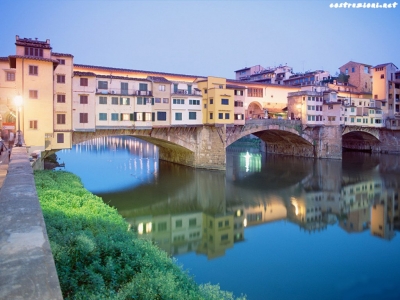
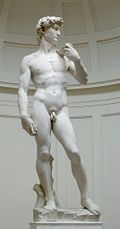












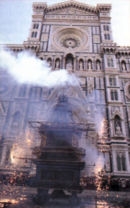
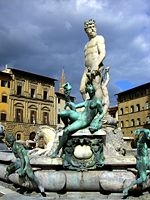
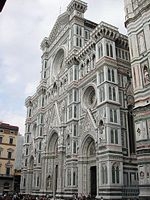
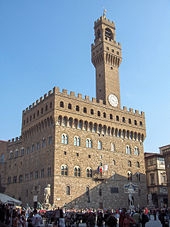
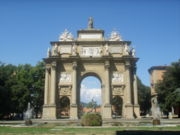
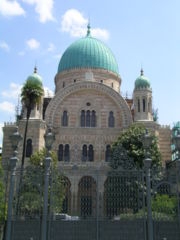
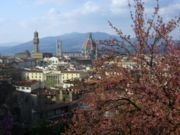
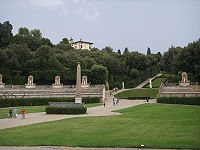
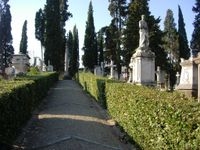
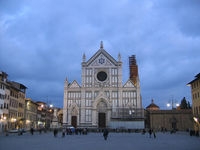
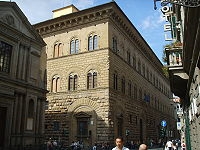
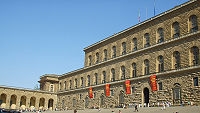

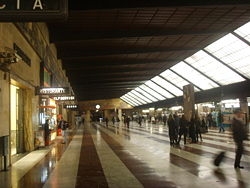
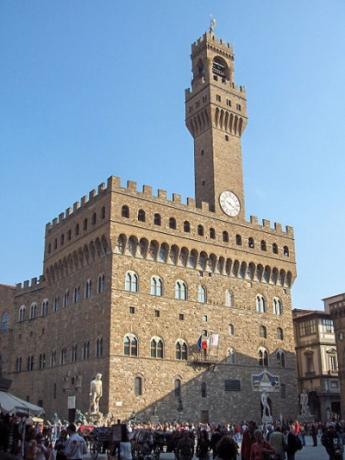


 Vuoi cercare sulla Mappa? Clicca qui
Vuoi cercare sulla Mappa? Clicca qui





























